tags: Birdbooker Report, bird books, animal books, natural history books, ecology books
Books to the ceiling,
Books to the sky,
My pile of books is a mile high.
How I love them! How I need them!
I'll have a long beard by the time I read them.
~ Arnold Lobel [1933-1987] author of many popular children's books.
The Birdbooker Report is a special weekly report of a wide variety of science, nature, environment and behavior books and field guides that currently are, or soon will be available for purchase. This report is written by one of my Seattle birding pals and book collector, Ian "Birdbooker" Paulsen, and is edited by me and published here for your information and enjoyment. Below the fold is this week's issue of The Birdbooker Report which lists ecology, environment, natural history and bird books that are (or will soon be) available for purchase.
FEATURED TITLE:
-
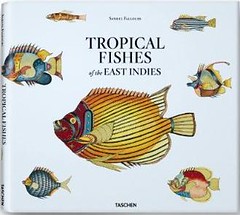 Fallours, Samuel. Tropical Fishes of the East Indies. 2010. Taschen. Hardbound: 224 page folio with 100 page booklet (by Theodore W. Pietsch). Price: $69.99 U.S. [Amazon: $47.24].
Fallours, Samuel. Tropical Fishes of the East Indies. 2010. Taschen. Hardbound: 224 page folio with 100 page booklet (by Theodore W. Pietsch). Price: $69.99 U.S. [Amazon: $47.24].
SUMMARY: One of the first depictions of marine fauna comes from Samuel Fallours, who was in the service of the Dutch East India Company. On the island of Ambon, one of the Moluccas, he made drawings of fish and other marine organisms of the Indian Ocean and brought them back to Holland in 1712. His drawings belong to a number of sets of similar drawings, depicting hundreds of animals, mostly fish but also crustaceans, insects, a dugong, and even a mermaid. Some of these became the basis for 18th-century publications, among them Louis Renard's Poissons, Ecrevisses et Crabes (1719) and François Valentijn's "Verhandeling der Ongemeene Visschen van Amboina", a chapter in his Oud en Nieuw Oost-Indien (1724â1726). These beautiful, elaborately detailed and brilliantly colored drawings bear extraordinary witness to the marine fish fauna of the East Indies and can still be interpreted in light of present-day scientific knowledge.From an artistic and historical viewpoint, these drawings are among the finest natural history illustrations ever made. Samuel Fallours apparently born in Rotterdam, began his career as a common soldier in the service of the Dutch East India Company. On 27 April 1703, he sailed from Goeree, the Netherlands, to Batavia where he stayed until at least the close of 1705. By June 1706, he was serving as a soldier in Ambon, assigned to the main guard-house of Castle Victoria. From September 1706 to June 1712, he held the title of Associate Curate (krankbezoeker), a kind of assistant to the clergy, entrusted with consoling the sick of Ambon. He left the Indies for the Netherlands in November 1712. During his sojourn in Ambon (1706-1712), Fallours executed the illustrations.
RECOMMENDATION: Anyone interested in natural history art will want this book!
New and Recent Titles:
-
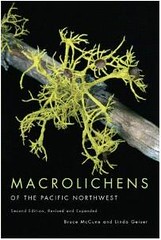 McCune, Bruce and Linda Geiser. Macrolichens of the Pacific Northwest (Second Edition). 2009. Oregon State University Press. Paperback: 464 pages. Price: $30.00 U.S. [Amazon: $21.90].
McCune, Bruce and Linda Geiser. Macrolichens of the Pacific Northwest (Second Edition). 2009. Oregon State University Press. Paperback: 464 pages. Price: $30.00 U.S. [Amazon: $21.90].
SUMMARY: A key component in healthy ecosystems, lichens can be found in almost any natural habitat in the Pacific Northwest. This comprehensive guide to the region's macrolichens is intended for use by beginners as well as specialists: weekend naturalists will be able to identify specimens and recognize the great diversity of lichens, while lichenologists and mycologists will gain greater knowledge of the distribution and abundance of various species. This revised and expanded edition of Macrolichens of the Pacific Northwest includes 116 new species and 176 additional illustrations and incorporates an understanding of macrolichens that has advanced tremendously in the past decade. Macrolichens of the Pacific Northwest includes keys to 113 genera and 586 species of Oregon and Washington macrolichens -- all the macrolichens known or expected to occur in the two states. The keys also provide reasonable coverage for lichens of Idaho and Montana, inland to the Continental Divide. Color photographs and detailed descriptions are provided for 246 species, emphasizing lichens prevalent in forested ecosystems. The illustrated glossary and introductory material cover the terminology needed to identify macrolichens and provide information on collection and handling. The biology, ecology, and air-quality sensitivity of lichens are discussed; regional air-quality sensitivities are provided for 184 species. Macrolichens of the Pacific Northwest will prove invaluable to anyone seeking to identify lichens or to better understand these organisms and their vital role in the natural world.
RECOMMENDATION: Probably the best book on the subject for the region. -
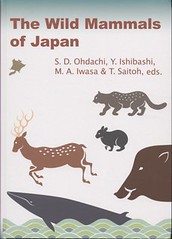 Ohdachi, S.D. et al. (editors). The Wild Mammals of Japan. 2010. Shoukadoh Book Sellers. Hardbound: 544 pages. Price: about $61.73 U.S. (plus shipping).
Ohdachi, S.D. et al. (editors). The Wild Mammals of Japan. 2010. Shoukadoh Book Sellers. Hardbound: 544 pages. Price: about $61.73 U.S. (plus shipping).
SUMMARY: This book includes accounts for the 170 species of mammals found in Japan. Descriptions for each species include red list status, distribution, fossil record, morphology, dental and mammal formulae, genetics, reproduction, lifespan, diet, habitat, home range, behavior, natural enemies, parasites and a remarks section if needed.. Full color photos and distribution maps are also included. The book can be ordered here.
RECOMMENDATION: For anyone with an interest in Japanese mammals. -
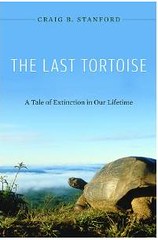 Stanford, Craig B. The Last Tortoise: A Tale of Extinction in Our Lifetime. 2010. Belknap/Harvard. Hardbound: 210 pages. Price: $23.95 U.S. [Amazon: $17.24].
Stanford, Craig B. The Last Tortoise: A Tale of Extinction in Our Lifetime. 2010. Belknap/Harvard. Hardbound: 210 pages. Price: $23.95 U.S. [Amazon: $17.24].
SUMMARY: Tortoises may be the first family of higher animals to become extinct in the coming decades. They are losing the survival race because of what distinguishes them, in particular their slow, steady pace of life and reproduction. The Last Tortoise offers an introduction to these remarkable animals and the extraordinary adaptations that have allowed them to successfully populate a diverse range of habitats -- from deserts to islands to tropical forests. The shields that protect their shoulders and ribs have helped them evade predators. They are also safeguarded by their extreme longevity and long period of fertility. Craig Stanford details how human predation has overcome these evolutionary advantages, extinguishing several species and threatening the remaining forty-five. At the center of this beautifully written work is Stanford's own research in the Mascarene and Galapagos Islands, where the plight of giant tortoise populations illustrates the threat faced by all tortoises. He addresses unique survival problems, from genetic issues to the costs and benefits of different reproductive strategies. Though the picture Stanford draws is bleak, he offers reason for hope in the face of seemingly inevitable tragedy. Like many intractable environmental problems, extinction is not manifest destiny. Focusing on tortoise nurseries and breeding facilities, the substitution of proxy species for extinct tortoises, and the introduction of species to new environments, Stanford's work makes a persuasive case for the future of the tortoise in all its rich diversity.
RECOMMENDATION: For those interested in tortoises and/or the current extinction crisis. -
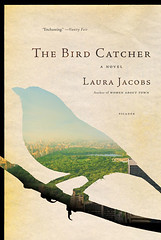 Jacobs, Laura. The Bird Catcher: A Novel. 2010. Picador. Paperback: 294 pages. Price: $15.00 U.S. [Amazon: $10.80].
Jacobs, Laura. The Bird Catcher: A Novel. 2010. Picador. Paperback: 294 pages. Price: $15.00 U.S. [Amazon: $10.80].
SUMMARY: Margret Snow is the quintessential New York woman. She dresses the windows of Saks Fifth Avenue by day and mingles in the downtown art world by night. Married to Charles, a professor at Columbia, they live on the Upper West Side, where, carefully camouflaged within their hectic Manhattan lives, they share a mutual passion for bird watching. When Margret's life is violently shaked by tragedy, however, she discovers a means to transform her obsession with birds -- and her own unlocked imagination -- into an ambitious, healing work of art. The Bird Catcher is a witty, poignant story about a remarkable woman who is as distinctive as the birds that fill the skies above her.
RECOMMENDATION: An interesting summertime read that's a hybrid between Sex in the City and John James Audubon.
You can read all the Birdbooker Reports in the archives on this site, and Ian now has his own website, The Birdbooker Report, where you can read his synopses about newly published science, nature and animal books. But Ian assures me that he still loves us here, so he'll still share his weekly Birdbooker Reports with us!



